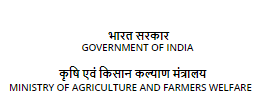Trichoderma Based Formulation as Biopesticide
Background:
Trichoderma based formulation as biopesticide may be used to control plant diseases such as damping-off, root-rot, wilt, crown-rot, neck-rot, stalk rot, die-back, fruit rot and foliar diseases, which are caused by the fungi, Rhizoctonia solani, P. aphanidermatum, C. capsici, S. rolfsii, S. sclerotiorum, L. theobromae and Fusarium. Most of the strains of Trichoderma harzianum does not work at high temperature and along with fungicides which is one of the main problems.
Technology Details:
The novel T. harzianum strain of this invention can be used as a bio-control agent in combination with sub-lethal doses of other chemical to control plant diseases caused by a wide range of plant pathogens that are resistant to some fungicides i.e. R. solani, P. aphanidermatum, C. capsici, S. rolfsii, S. sclerotiorum, L. theobromae and Fusarium spp. In addition to fungicidal activity and long-term survivability, T. harzianum strain TH3 possesses tolerance good EC50 value to several chemical pesticides which would kill or retard the growth of other fungi such as carbendazim, captan, thiram, mancozeb, pendimithalin, chloropyriphos which are commonly used. In addition to its wide range of antagonism and resistance to chemical pesticides, this strain Th3 is capable of long-term survivability and of controlling diseases caused by soil-borne pathogens throughout a 15 to 400 C temperature range suitable for application in semi-arid as well as temperate agricultural zones. There are a variety of possible methods of applying the present invention are the application of T. harzianum TH3 (ITCC-5593), conidia or chlamydospores or mycelium or mixtures of this directly to the soil, as seed and seedling dip treatment. The conidia of T. harzianum Th3 are the active antagonistic structures of the fungus, whereas the chlamydospores are the fungal long-term survivable resting structures. Direct application of the mycoparasite, however, seems to be less effective than the application of a biocontrol composition, which contains T. harzianum TH3 and an agriculturally acceptable carrier that is a part of this invention. These biocontrol compositions may be applied directly to the soil in which the plant is to be grown, or the seed treatment and seedling dip may also be performed by the above-said formulation containing an effective amount of the biocontrol composition. This biocontrol formulation composition is in a solid form of wettable powders, which include another adjuvant such as sticking agents, a suitable food base for shelf-life enhancement and compatible pesticides etc. The quantity of spores, conidia or chlamydospores, of the mycoparasite in the composition, is preferably above 2-5 x 106 spores per gram of composition and has a shelf life up to two years at room temperature. The range of host plants that are subject to attack by the soil-borne pathogens R. solani, P. aphanidermatum, C. capsici, S. rolfsii, S. sclerotiorum, L.theobromae, Fusarium spp and nematodes Meloidogyne incognita, M. javanica is very broad. This invention is effective in controlling diseases caused by these soil-borne pathogens over this wide range and is effective in protecting plants such as beans, peas, tomatoes, cucumbers, onion, ladyfinger, ornamentals, carnations, rose, gladiolus, chilies, chickpeas, carrots, eggplants and other plant seedlings.


